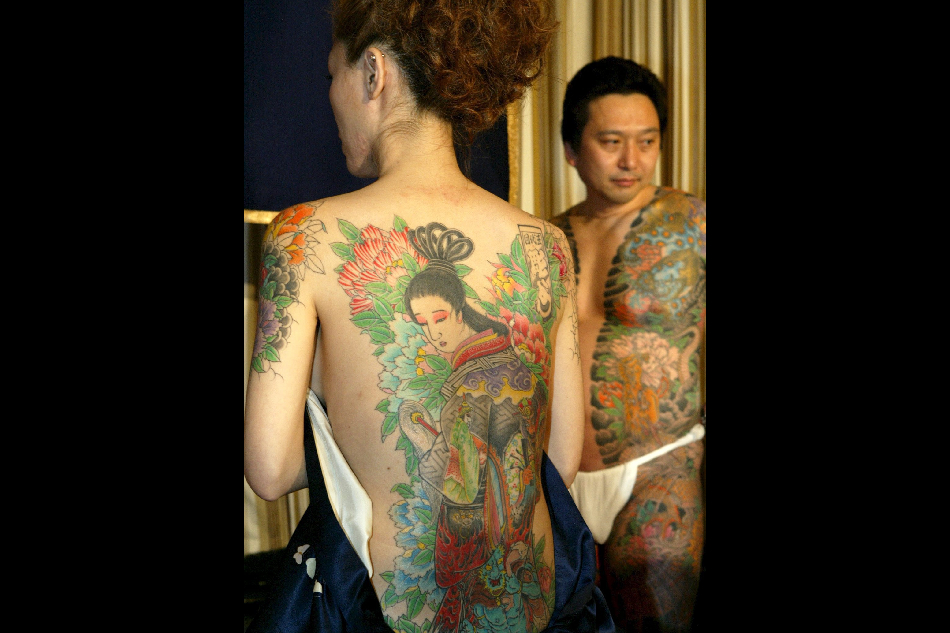
The Bunshin Tattoo Museum in Yokohama, Japan, is dedicated to Yoshihito Nkano’s work. He is also known as Horiyoshi, a traditional Japanese tattooing master.
Mayumi Nakano, Horiyoshi’s wife, is the museum’s director. She confides in wearing a sleeveless top that shows off entwined flower tattoos of vivid reds, yellows, and greens on her wrists up to her shoulders. Her first tattoo was when she turned 20. Her husband did it.
She tells DW that tattoos in Japan are misunderstood, surrounded with stencils of intricate designs and photos of her satisfied clients.
“Tattoos were always associated with gangs in the underworld, but I hoped it would change.” “Japanese society has not yet changed, even though tattoos are not stigmatized in other countries,” Nakano says.
The Art of Taboo: mastering it
Horiyoshi, now 77 years old, had stated in interviews that his fascination with tattoos began at age 11 or 12 when he was mesmerized after seeing a yakuza tattooed full body at a public bathhouse near him. After working as an assistant for legendary tattoo master Shodai Horiyoshi, he earned the title Horiyoshi 3.
Horiyoshi, who won countless awards, used to outline his designs manually until the 1990s when he switched to electric machines. Tebori, a traditional technique that uses a metal or bamboo rod with needles on the tip to add color and shading, is still used today.
Horiyoshi uses the same designs as most Japanese tattoo artists: iridescent “koi carp,” dragons, snakes, peony flowers, maple leaves, and tigers. Some are inspired by Buddhist deities, mythological creatures, or other designs. Other popular designs are bright pink cherry blossoms.
Horiyoshi said in an interview with The Japan Times that “the creatures I draw come to life on someone’s skin.”
Why do criminals associate tattoos with a crime?
There is no doubt, however, that the majority of Japanese view tattoos as a sign of criminality. This hasn’t changed over the years.
Ainu tribes of Hokkaido used indigo-based ink to tattoo their skin in ancient times. People in the Ryukyu Kingdom, now Okinawa Prefecture, and the islands south of mainland Japan also used skin art inspired by their culture.
In the Edo Period (1603-1867), the nation’s rule was more centralized, and tattooing was used as a punishment for certain crimes.
A murderer was permanently tattooed, and a thief had his face marked. Tattoos were associated with criminals, despite the development of artistic and decorative tattoos.
The Meiji period began in 1868. The Japanese believed tattoos with elaborate designs would offend or shock foreigners, so they opened their borders and sent out political and commercial missions abroad.
A thriving tattoo industry exists, but it is dominated by foreigners especially interested in Japanese-style tattoos.
The British royals were particularly interested in Japanese tattoos. Prince Alfred, Duke Edinburgh, had a writhing Draco on his right arm in Tokyo in 1869. Prince Albert, Prince of Wales, and George were both sailors on HMS Bacchante and were tattooed in 1881.
In 1948 tattooing became legal again, but the criminal connotations could not be removed, especially when tens of thousands of Japanese men became part of rival yakuza bands in difficult years following World War II.
Tattoos remain a subculture in Japan.
Due to this association, many companies refuse to hire anyone with a tattoo, fearing that their customers or partners may assume the company has links to Japan’s criminal underworld.
Anyone with a visible tattoo will be prohibited from public baths or swimming pools. Beaches are a no-go for people with visible tattoos.
There are signs of a change in the attitude of the Japanese government, despite their refusal to accept tattoos. Japan’s Defense Ministry is concerned about the declining recruitment rates. It has announced that it plans to change its regulations so that men and women with tattoos can join the military.
Kyle Cleveland is a professor at Temple University Tokyo’s Tokyo campus. He said, “In Japan, tattoos remain a niche culture associated with those in the music, fashion, or art worlds.” It is important to distinguish between tattoos worn today by youth and those with a history with the yakuza.
Cleveland said there was a controversy in Japanese society about athletes with visible tattoos competing at the Tokyo Olympic Games. This debate continues today as tourists worldwide flock to Japan. He added that these tattoos differ from those that still denote the underworld.
Cleveland said tattoos are “deeply symbolism and are meant to signify membership” in criminal groups.
Cleveland says that designs more commonly seen elsewhere, like playful designs of animals or flowers or a favorite image or quote, are very individualistic and mark life transitions, such as marriage or birth.
He said that Japanese society currently conflates tattoos and piercings, which makes it difficult for them to gain traction.
Megumi Nkano, the curator of the Bunshin tattoo museum, isn’t convinced that Japan is about to change, even though tattoos are still popular around the globe.
A framed photograph of David Bowie from when he was at Horiyoshi 3’s studio around 1990 is on a desk.
She says, “He was an absolute gentleman.” “And he understood.”
Comment and share the article.
